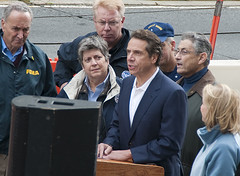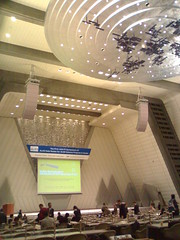The recent ad launched by opponents of the fossil fuel industry declaring “Exxon Hates Your Children” is disturbing, provocative and unsettling. Two advocacy groups, Oil Change International and The Other 98%, launched the controversial ad on its website on Wednesday in an effort to cajole Congress to “eliminate fossil fuel subsidies amid fiscal cliff negotiations”. The ad portrays an actor posing as a representative of Exxon, stating, “We all know the climate crisis will rip [your children’s] world apart, but we don’t care because it will make us rich”. The targeted markets for this advertising campaign includes the very same areas where the American Petroleum Institute is running ads arguing that “[m]ore energy development produces more jobs, revenue and energy. More taxes produce less of all three”.
This ad war comes on the heels of the budget crisis and looming fiscal cliff. Proponents of climate change face the possible elimination of wind energy tax credits amid the arguments of conservatives voicing objection to the 2% subsidy by the federal government. If not extended the PTC credit will expire. Conversely, opponents of the fossil fuel industry voice objections to not only the huge subsidies received by oil companies, but also to their business model, which requires continuous drilling for oil, which is proven to be responsible for climate disruption. They cry foul also because in the last year alone, renewable energy, though recognized as important for a healthy environment, received six times less support worldwide than fuel subsidies.
While the declaration that “Exxon Hates Your Children” grabs the attention, it is propaganda. We all know or should know that Exxon and all major corporations exist at the will of the people. As long as Exxon (the current poster child for the fossil fuel industry) has a viable market, it will be around, doing what it does– drilling and manufacturing oil for oil-hungry consumers. Exxon does not hate children. Rather, it loves money, and in its quest to make the money it loves so much, it harms the environment. Perhaps the best analogy for this scenario can be found in the circumstances surrounding Timothy McVeigh‘s bombing of the Federal Building in Oklahoma City. It was not McVeigh’s intent to kill the children in the nursery in the federal building. Rather, they were “collateral damage” in his quest.
Currently, the earth and its inhabitants all are the “collateral damage” of the fossil fuel industry. However, we do have a choice. Let’s strive to reduce our carbon footprint and reliance on fossil fuels. We can start at home by conserving energy, reducing our use of water and electricity, recycling and using energy-efficient products. Moreover, we can make sure we are heard by our representatives, who serve at our will. Demand that they vote green or be voted out of office. Let’s fight to live green, be green!
Sources for article:
- http://www.huffingtonpost.com/2012/12/05/exxon-hates-your-children_n_2246481.html
- http://www.catb.org/esr/writings/reflections-on-mcveigh.html








